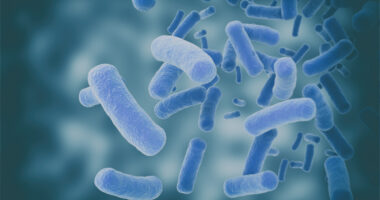Extracellular Matrix Changes May Point to New Biomarkers, Therapies

A detailed analysis of lung tissue of cystic fibrosis (CF) patients found specific changes to the extracellular matrix (ECM), the three-dimensional network of molecules and proteins outside the cell that supports lung function, a study showed.
Drivers of ECM breakdown may act as therapeutic targets or biomarkers to monitor disease progression, while others that mark impaired ECM-related pathways may serve as add-on medications to currently available therapies, the scientists suggested.
The study, “Pathological remodeling of distal lung matrix in end-stage cystic fibrosis patients,” was published in the Journal of Cystic Fibrosis.
CF, caused by defects in the CFTR protein, is marked by abnormally thick mucus and chronic inflammation in the lungs, causing tissue damage that ultimately leads to end-stage lung disease — requiring a transplant.
Normally, a well-organized ECM supports lung function by providing a large surface area for gas exchange that stretches and relaxes during breathing.
As CF becomes more severe, however, airway tissue thickens — a process called structural remodeling — due to changes in the ECM, especially in the lungs’ outer (distal) regions that include the alveoli, or the tiny air sacs where gas is exchanged.
Therapies, known as CFTR modulators, have been designed to restore function to the defective CFTR protein, but additional treatments targeting ECM remodeling, which is understudied in CF, may help slow or reverse tissue damage and lung function decline.
Researchers at Columbia University, New York comprehensively analyzed proteins in the distal lung ECM, referred to as the matrisome, in end-stage CF, with the intent of identifying biomarkers and informing therapeutic strategies.
Diseased lung tissue was obtained at transplant from patients with end-stage CF, and uninjured regions of healthy donor lungs served as a control. The structure and composition of lung ECM underwent imaging and protein analysis.
Imaging analysis found that, compared to control lungs, CF samples had tissue thickening, fragmented fibers, and fluid-filled airways and alveoli with varying degrees of severity. The alveolar architecture and surrounding tissue were abnormal in the CF airway.
Protein composition in the ECM was significantly altered in CF compared to healthy lung ECM. The team identified 243 significantly different proteins in the CF matrix, including 14 types of collagen A (a key ECM component), 22 proteins with attached sugar molecules (glycoproteins or proteoglycans), 10 matrix regulators, six matrix-associated proteins, and nine secreted proteins. The remaining 182 were altered, but not considered matrisome components.
More than 90% of matrix proteins significantly altered in CF tissue were produced at lower levels, or down-regulated.
There was no significant difference in the total matrix protein abundance in CF and control lung tissue, “suggesting that CF does not change the total amount of matrix but instead leads to loss of diversity among matrix proteins,” the research team wrote.
Several matrix-related pathways in CF versus the control lung were significantly different, including those associated with the ECM degradation, as well as collagen protein, matrix components that provide tensile strength, and matrix proteoglycans. The researchers also identified differences in ECM-cell interaction and cell signaling.
The function of down-regulated proteins included ECM structural constituents, collagen binding, sugar binding, and ECM organization. Proteins that were increased, or up-regulated, had functions related to cadherin — essential in the formation of junctions to allow cells to adhere to each other — proteins that bind unfolded proteins, and those that slow wound healing.
A more detailed analysis found most types of collagen were down-regulated, with a few up-regulated, but not significantly. Also down-regulated in CF tissue were membrane proteins such as elastin — enabling the cyclic movement during breathing — and laminin, which provides structural support and promotes cell adhesion to the membrane.
In contrast, a protein called galectin-1 was overproduced in CF at moderate to high levels, “indicative of infection response,” the researchers wrote.
Consistent with the breakdown of key matrix components, the team observed significant down-regulation of proteins that block ECM degradation.
“It is unclear if matrix breakdown is intrinsically driven by loss of CFTR expression or if chronic infection is the primary driver of matrix destruction,” the researcher noted. “Comparison of matrix composition in other organs affected by CF (i.e., pancreas, liver) that are not undergoing an infectious process may offer insights into the relative contributions.”
Among the secreted factors found, inflammatory markers — including interleukin-16 and TGF-beta1 — were significantly increased in CF than in the control lung.
“Drivers of matrix destruction identified in this study could act as therapeutic targets or biomarkers to monitor disease progression,” the author wrote. “Drugs targeting dysregulated matrix pathways may serve as adjunct interventions to CFTR modulators to support repair of damaged tissue and recovery of lung function in CF patients.”








